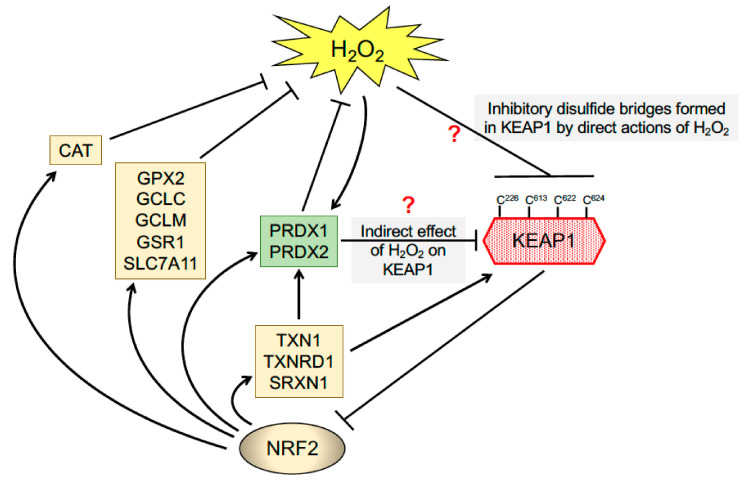Figure 4.
Stimulation of the NRF2-KEAP1 axis by H2O2. The cartoon depicts potential ways in which KEAP1 is inactivated by H2O2 and how induction of NRF2-target genes suppresses intracellular H2O2 levels. In particular, it draws attention to the possibility that PRDX1 and PRDX2 might be the primary sensor of H2O2 and when oxidised, relay this information to KEAP1 by stimulating disulfide bridge formation between Cys226, Cys613, Cys622 and Cys624 in the ubiquitin ligase substrate adaptor, allowing NRF2 to evade ubiquitylation by CRLKEAP1 and induce antioxidant genes (shown in boxes), which in turn serve to supress intracellular H2O2 levels. However, through induction of the TXN-based antioxidant system, activated NRF2 would also stimulate reduction of disulfide bonds in KEAP1, and so restore repression of NRF2 by CRLKEAP1, thereby providing a negative feedback loop.

